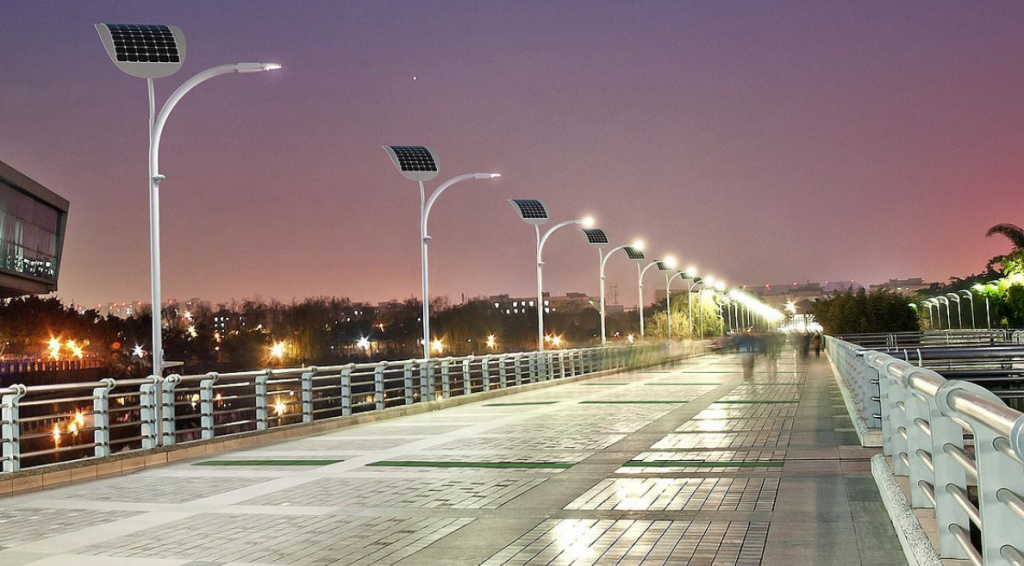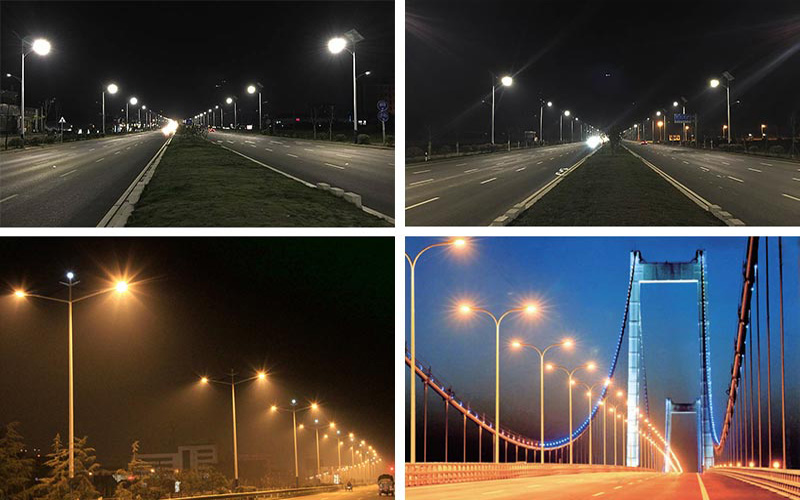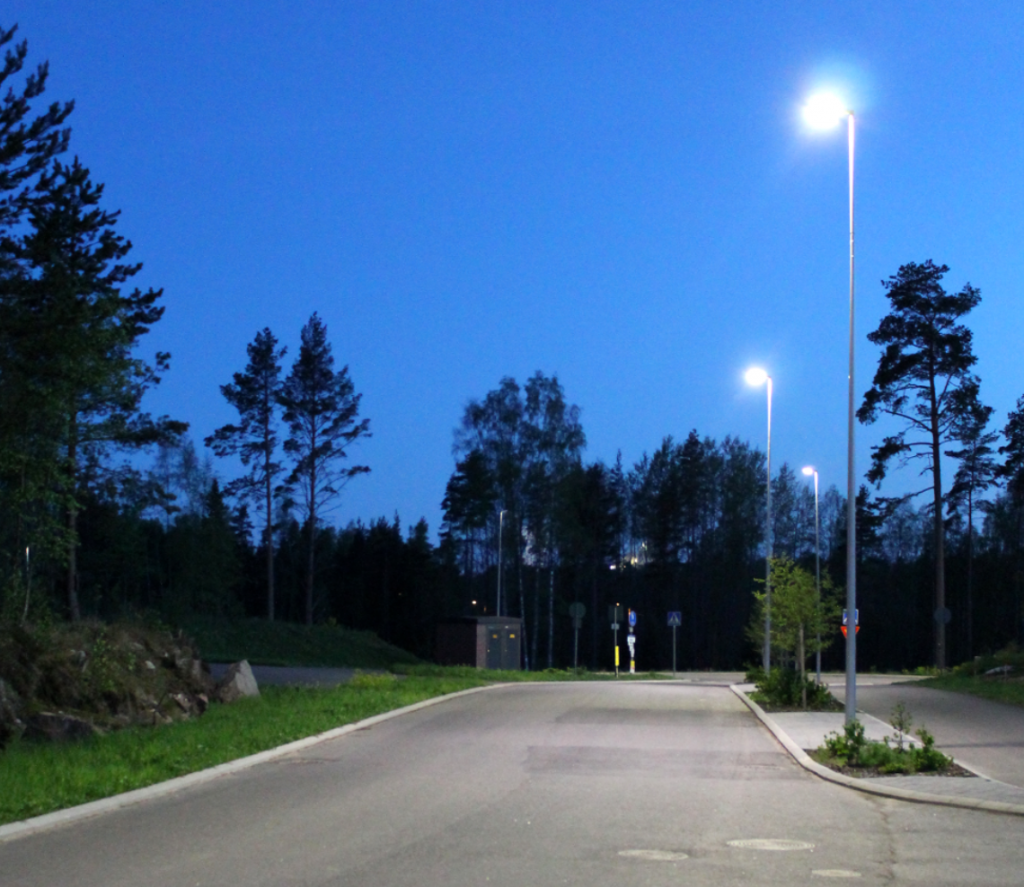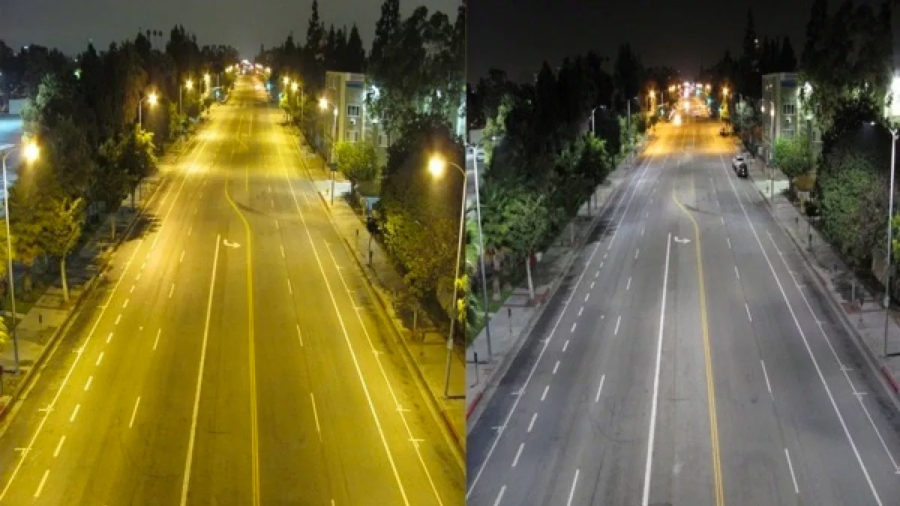Overview
At present, with the standardization and modularization of LED lighting technology and the continuous improvement of light engine, heat dissipation, driving power and other technologies, the problems of standardization, unity and compatibility are constantly being solved. Coupled with the increase in power, the optimization of light distribution, the improvement of efficiency, and the reduction of cost, more and more LED street lights are used in urban road lighting.
But there are some problems in the application and maintenance process. Now let’s discuss some doubts in the calculation and testing of LED street lamp illumination, hoping to be beneficial to the application and development of LED.
1. Illumination Calculation of LED Street Lights
Illuminance calculation method
According to the calculation method of the average illuminance of road lighting, the calculated value of the average illuminance of the road refers to the maintenance value. It is called the minimum maintenance value in the CIE recommendation standard. It is the average illuminance value used in the design calculation after taking into account factors such as the attenuation of the light flux when the light source is planned to be replaced and the efficiency drop of the lamps due to pollution.
In other words, the average illuminance value is basically the illuminance value before the light source is replaced. Its initial illuminance is calculated according to the maintenance factor of 0.7 (sodium lamp lamp IP65) should be 1.43 times the illuminance value when the light source is replaced.
Illuminance and light decay
Taking expressway lighting as an example, the national standard CJJ45-2006 stipulates that the average illuminance of expressways is 20-30Lx. That is, the initial illuminance should not be lower than 28.6-42.9Lx to meet the maintenance value required for road lighting. When the relevant manufacturers recommend their LED street light products, the average illuminance value is replaced by the initial illuminance value that just exceeds or basically reaches the minimum average illuminance value, indicating that it has reached the international standard and can replace the relevant high-pressure sodium lamps to save energy.
In order to achieve the purpose of reducing light decay, some manufacturers have designed a means of regularly increasing the voltage or current on the driving power supply. Increase the output voltage or current by about 3% at regular intervals to reduce the actual light decay.
This practice of drinking poison to quench thirst not only fools the owners but also damages the life of the light source electrical appliances. By continuously increasing the voltage and current to improve the luminous efficiency, it is easy to cause damage to the LED chip.
Therefore, when LED street light technology is not yet fully mature, the use of LED street lights for road lighting not only requires consideration of its maintainability and cost-effectiveness, but also requires preliminary tests to accurately measure the actual luminous efficiency and actual light decay of the products provided by the manufacturer.
2. Test and Judgment of LED Street Light Illumination
(1) The necessity of testing the illumination of LED street lamps
- Most of the light sources of LED lamps are composed of low-power LEDs or high-power 1w, 2w LED chips through secondary light distribution. The number varies from dozens to hundreds. LED is a direct light source with strong directional properties, and it is difficult for the human eye to look directly at it.
- With the development of technology, the light efficiency and lifespan of LED street lamps are constantly approaching ideal. Its light decay limit will become the biggest problem faced by LED street light maintenance.
After the LED light source actually operates for a period of time, the semiconductor material that constitutes the LED will decay and age, and eventually lose its original function, resulting in “death” – failure.
Before its “death”, the luminous flux continues to decrease until it cannot meet the minimum requirements of the relevant level of road lighting illumination or brightness. If it is not replaced at this time, it will seriously affect the lighting level and cause a great safety hazard to traffic and driving.
According to research surveys in the United Kingdom, the United States, Germany and other countries, the reduced illuminance compared with the original suitable illuminance will significantly increase the road traffic accident rate, up to 36%.
To what extent does the light decay of the LED light source need to be replaced? We don’t have specific criteria. Therefore, it brings great difficulty and uncertainty to the maintenance work, which seriously restricts the speed and accuracy of the maintenance.
(2) Method of LED street light illumination test
i, traditional method: four-point method or center method
That is, when measuring, the road surface is divided into many small grids, and the illumination distribution of each small grid is considered to be uniform. Then measure the illuminance on each small grid, and finally multiply the illuminance value on each small grid with the area of the corresponding small grid and sum it up. Divide by the sum of these small grid areas to obtain the average illuminance of the measured road surface, that is, the ratio of the incident road luminous flux to the road surface area.
This method has many measurement points, long time, heavy workload of data recording and processing, and there is a big safety hazard when measuring on a road that has been opened to traffic. At the same time, LED street lights have different damage conditions for each light. If the illuminometer is used to test each light one by one, the workload is extremely huge, and a lot of manpower and vehicles need to be invested.
ii. Recommended measurement method:
(1) Illuminance meter measurement
The illuminance meter with memory and storage function is installed on the electric remote control toy car, and the four-point method or center method illuminance test is carried out by the pre-control and on-site remote control of the surveyor standing in a safe place on the roadside.
The measurement, recording and storage tasks are automatically completed by the illuminometer. This automatic control trolley test method has the advantages of fast measurement speed, good safety, less labor intensity and convenient data processing than the traditional method. At the same time, it effectively eliminates the interference caused by the testers in the field, such as blocking light, and effectively improves the measurement accuracy and data accuracy.
(2) Use the test vehicle.
The test car system consists of an illumination sensor, a host and a computer. Install the two illuminance sensors on the two switch covers of the car horizontally, and make the two sensors 1 meter apart. The car drives at a constant speed (20km/h) at a constant speed. The data is transmitted to the computer through the RS-232 interface, and processed by the computer software, the average illuminance and illuminance uniformity of the road surface can be obtained immediately.
If the road has multiple lanes, measure each lane once. Then, the data of these several lanes are processed through the software supporting the system to obtain the overall average illuminance and illuminance uniformity of the road.
If the installed street lamps also have lighting sources for non-motorized vehicle lanes, the test vehicle can run on the non-motorized vehicle lanes for testing.
Using the test car, the test for the entire road is relatively fast. However, for each lamp on the same road section, even if it is installed at the same time, after a period of operation, the parameters of each lamp are different, and it is impossible to accurately measure each lamp. And the measurement cycle is not short, the procedures are cumbersome, and the timely rate of maintenance is not high. Similarly, investing in a test vehicle requires high equipment and operating costs (approximately $18,000 in total for the test equipment), and corresponding fixed measurement personnel are required.
In the future, if the chip damage rate can be monitored in real time through LED street lamps, and the lamps will automatically stop running when the damage rate reaches a certain level, the maintenance efficiency and cost of LED street lamps can be greatly improved.
3. Quantification of LED Light and Dark Vision Correction Coefficient
In the upsurge of LEDs entering the street lamp application, many LED manufacturers have made signs of the visual characteristics of the human eye in order to open up the market. Use the photopic and scotopic properties of the human eye to explain that LEDs are brighter than sodium lamps.
It is considered that for the same spectral distribution, there is a significant difference in the brightness under photopic and scotopic conditions. The brightness of LED lamp scotopic vision is 2.35 times that of photopic vision, while the brightness of sodium lamp scotopic vision is 0.94 times that of photopic vision.
Usually optical instruments are photosensitive under photopic conditions, while street lights are used for night lighting, which belongs to scotopic conditions. Therefore, the data tested with ordinary optical instruments should be corrected. The correction factor (S/P) of LED street lamps is 2.35 and that of sodium lamps is 0.94. Therefore, under the same illumination conditions, the LED street lamp is 2.5 times brighter than the high pressure sodium lamp.
Comparison of correction factor between LED lamps and HPS lamps
To achieve the same illuminance as the sodium lamp, the illuminance of the LED street lamp only needs to be 40% of that of the sodium lamp. In fact, the work of a TC1-58 group of CIE and relevant domestic experts has confirmed that road lighting is at the end of the photopic vision, and its characteristics must be close to the characteristics of photopic vision and far away from the characteristics of scotopic vision.
The road lighting brightness segment is within the range of intermediate vision, and the value is far below 2.5. However, its specific value has not yet been determined. If it can be quantified as soon as possible, designers can carry out accurate LED street lighting design. Manufacturers can reduce production costs, maintenance departments can reduce maintenance funds, and the state can also better carry out energy conservation and emission reduction to reduce related energy consumption, which is conducive to environmental protection.
Summarize
The above are some thoughts on the illumination of LED street lamps from the perspective of LED street lamp maintenance and management. Hope to provide some reference for relevant departments when using LED as road lighting source. At the same time, it also provides some ideas for the maintenance and management personnel of the first line light for the LED R&D department, hoping to design and produce LED street light products more suitable for road lighting faster and better.








